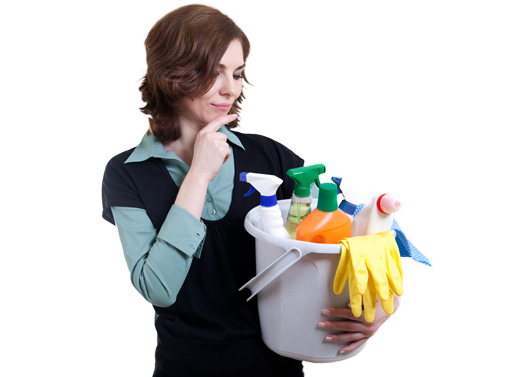Ways to Eliminate the Persistent Damp Odor
Posted on 04/09/2025
Are you tired of walking into your home or office and being greeted by a musty, damp smell that just won't go away? Persistent damp odors not only make spaces unpleasant but can also signal underlying moisture and mold issues that could threaten your health and property. In this comprehensive article, we will explore effective ways to eliminate persistent damp odor, identify their root causes, and prevent them from recurring. Discover useful tips, proven solutions, and easy routines to keep every room fresh, clean, and healthy.
Understanding the Persistent Damp Odor
Before we delve into ways to get rid of persistent damp smells, it's crucial to understand what causes them in the first place. A persistent musty scent typically means excess moisture in the air or surfaces, creating a perfect environment for mold, mildew, and bacteria to thrive. These organisms release volatile organic compounds (VOCs) responsible for unpleasant odors.
- Leaking roofs or pipes
- Poor ventilation
- Flooding or water spills
- Wet carpets, furniture, or walls
- Basements and bathrooms with high humidity
- Condensation on windows and walls
By identifying these underlying causes of damp odor, you're already on your way to a fresher home.

Step-by-Step Methods to Remove Damp Odor
1. Identify and Fix Moisture Sources
The first and most crucial step in eliminating persistent damp smells is targeting the root of the problem: moisture. Inspect the suspected area for water damage, leaks, or excessive condensation.
- Inspect Plumbing: Check for leaking pipes, faulty faucets, or clogged drains. Repair any issues found.
- Roof and Basement: Look for water stains, pooling, or seepage. Seal cracks and waterproof vulnerable areas.
- Appliances: Ensure washers, dryers, refrigerators, and HVAC systems aren't leaking or causing condensation.
- Condensation: Use double-glazed windows and insulation to reduce moisture buildup on cold surfaces.
2. Increase Ventilation
Stagnant air allows damp odors to linger. Improving airflow is one of the best methods to eliminate musty damp smells in any room.
- Open Windows and Doors: Let fresh air circulate. Cross-ventilation is effective for removing trapped odors.
- Use Exhaust Fans: Especially in kitchens, bathrooms, and laundry rooms.
- Install Air Vents or Grilles: In problematic spaces like closets and basements.
- Consider Mechanical Ventilation Systems: Such as HRV or ERV systems for homes with chronic dampness.
3. Use Dehumidifiers to Reduce Humidity
Persistent damp odors thrive in high-humidity environments. To reduce the moisture level and neutralize odors, use a dehumidifier.
- Choose an Appropriately Sized Dehumidifier: Portable models are suited to small areas, while whole-house dehumidifiers can be installed for larger properties.
- Monitor Relative Humidity: Aim for levels between 30% and 50% for optimum comfort and odor control.
- Regular Maintenance: Clean the filter and empty the water tank as recommended for peak performance.
4. Clean and Disinfect the Affected Area
Simply airing out a space may not be enough. Deep cleaning is necessary to remove lingering spores and mildew causing the persistent damp odor.
- Hard Surfaces: Clean walls, floors, and ceilings with a mixture of water and mild detergent or vinegar.
- Mildew or Mold: Use a commercial mold remover or a mixture of one part bleach to four parts water (only on non-porous surfaces).
- Carpets and Upholstery: Shampoo, steam-clean, or use a fabric-safe disinfectant.
- Dispose of Irretrievably Damaged Items: Sometimes, removing heavily water-damaged furnishings is the only way to eradicate odor at its source.
5. Natural Odor Absorbers and Air Purifiers
There are many natural solutions for those seeking to remove stubborn damp odors without harsh chemicals.
- Baking Soda: Sprinkle on carpets, rugs, or inside shoes. Leave for a few hours, then vacuum.
- Activated Charcoal: Place bags or bowls in closets, basements, or corners to absorb moisture and odor.
- Vinegar: A bowl left in the room overnight will help neutralize mild odors.
- Houseplants: Spider plants, peace lilies, and Boston ferns can help purify indoor air naturally.
- Air Purifiers: Invest in HEPA or carbon filter air purifiers for ongoing odor and allergen control.
6. Wash Fabric Items Thoroughly
Soft furnishings like curtains, bedding, and cushion covers tend to absorb and retain damp odors.
- Launder With Hot Water: Use appropriate cycles and add a cup of vinegar or baking soda to the wash.
- Dry Completely: Hang items out in the sun or use a dryer. Never store fabrics while damp.
- Professional Cleaning: For items that can't be laundered at home, consider professional dry cleaning.
7. Address Basement and Crawl Space Issues
Basements and crawl spaces are notorious for harboring persistent musty odors. Be proactive:
- Install Vapor Barriers: On floors and walls to prevent ground moisture infiltration.
- Sump Pumps: Ensure your basement has adequate drainage and a functioning sump pump.
- Check Foundation Seals: Repair cracks and apply waterproof sealants.
- Ensure Proper Grading: Around the property to direct water away from the structure.
Long-Term Prevention of Damp Odors
1. Maintain Proper Humidity Levels
Use humidity meters (also called hygrometers) to keep an eye on indoor moisture levels. Remember, prevention is the best cure for persistent damp smells.
2. Regularly Check for Leaks and Water Damage
Proactive maintenance helps to catch small problems before they become big sources of damp and must. Pay extra attention after heavy rains or plumbing issues.
3. Encourage Air Movement All Year Round
Even in winter, periodic ventilation prevents stale, moist air from settling.
4. Use Moisture Barriers in High-Risk Areas
Install waterproof membranes in bathrooms, under flooring, and behind basement walls. These act as a physical block against moisture ingress.
5. Store Items Properly
Take care to store clothes, books, and valuables in dry, well-aired conditions. Use airtight bins or silica gel packs for extra protection.
When to Call a Professional
Sometimes, eliminating persistent damp odors requires expertise. Contact a mold remediation specialist or a building contractor if you notice:
- Extensive visible mold or black mold patches
- Structural damage due to prolonged moisture
- Unexplained, recurring odors after repeated cleaning
- Indoor air quality problems affecting health (such as allergies, headaches, or respiratory issues)
A qualified professional can assess, treat, and prevent further damage, ensuring the safety and well-being of your home or business.
Home Remedies for Quick Damp Odor Removal
- Lemons and Citrus: Cut lemons or oranges and place them in a bowl for a fresh scent while neutralizing odors.
- Essential Oils: Add a few drops of tea tree, lavender, or eucalyptus oil to a diffuser or on cotton balls around the room.
- Coffee Grounds: Place in open containers; they absorb odor and leave a pleasant, earthy aroma.
- Sunlight: Whenever possible, expose damp items to sunlight, which naturally kills mold, bacteria and odors.

Frequently Asked Questions About Eliminating Damp Odors
How long does it take to eliminate a persistent damp odor?
It depends on the severity and the extent of moisture damage. Minor smells may dissipate in a few days with thorough cleaning and ventilation, whereas severe or deep-seated odors can take weeks and may require professional intervention.
Is a damp odor harmful?
A persistent musty or damp smell can indicate the presence of mold or harmful bacteria. Long-term exposure can trigger allergies, asthma, or other respiratory issues, especially for children, elderly, or immunocompromised individuals.
Can air fresheners solve the problem?
Air fresheners and sprays may briefly mask the smell but fail to solve the underlying moisture problem. Always address the source of the odor for lasting results.
Can I safely clean mold myself?
Surface mold on small, non-porous areas (less than 10 square feet) can often be cleaned with household products. Wear gloves, masks, and ensure good ventilation. If in doubt, or if mold covers a larger area, it's best to call professionals.
Summary: Your Roadmap to a Fresher, Odor-Free Space
Eliminating persistent damp odor involves combining immediate actions with long-term strategies. Remember to address the root moisture problem, use proper cleaning techniques, maintain adequate ventilation, and adopt preventive measures. Choosing the right mix of natural remedies, technology, and professional help guarantees lasting solutions for damp odors in any space.
- Investigate and Fix Sources of Moisture
- Ventilate and Dehumidify Affected Areas
- Regular Cleaning and Disinfection
- Store Items Correctly
- Consider Professional Help When Necessary
Your home or office deserves to smell as clean as it looks. By following this guide on ways to eliminate the persistent damp odor, you'll not only improve the comfort of your environment but safeguard the health and longevity of your property. Say goodbye to musty air and hello to a fresh, inviting space!




